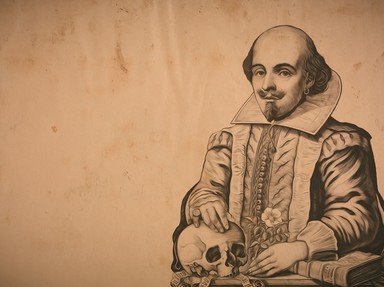Quiz Answer Key and Fun Facts
1. Young love; feuds; a reference to naming roses. What play am I?
2. A play within a play; a bad wife. What play am I?
3. A skull; insanity; a famous question. What play am I?
4. St. Crispin's Day; a Chorus; language barriers. What play am I?
5. Suspected faithlessness; smothering; an evil ensign. What play am I?
6. Stabbing; a speech about borrowing a body part; a prophetic wife. What play am I?
7. Clashing religions; shipwrecks; choosing caskets. What play am I?
8. A statue; shepherds; a jealous husband. What play am I?
9. Nuns; a sneaky duke; and an unanswered proposal. What play am I?
10. A snake; a monument; civil war. What play am I?
Source: Author
lordprescott
This quiz was reviewed by FunTrivia editor
looney_tunes before going online.
Any errors found in FunTrivia content are routinely corrected through our feedback system.
